Reviews
Frederick Wiseman
USA, 1976
Credits
Review by Adam Balz
Posted on 10 June 2008
Source
Categories Frederick Wiseman
For what it’s worth, the best review of Frederick Wiseman’s Meat comes not from Bill Nichols or Dan Armstrong of Film Quarterly, Barry Keith Grant’s Voyages of Discovery, or even Wiseman himself, but from the pages of a 1977 issue of the American Journal of Agricultural Economics. In discussing Meat, university professors Dennis Henderson and Bobby VanStavern unintentionally craft what could be the single greatest encompassment of every emotion surrounding Wiseman’s films, from enthrallment to confusion, adulation to disgust, anticipation to dread, all in less than two pages.
Opening with a statement that introduces Wiseman to the academic-agricultural populace, Henderson and VanStavern attach the subtle but unmistakable stigma of someone sympathetic towards animals:
Meat is an unusual documentary film, the tenth produced by Emmy award-winner Wiseman, whose productions include Primate, the 1975 study of scientific experimentation with monkeys and other primates that stirred much public anger and dismay. By stressing the macabre of livestock slaughter, one suspects that Wiseman might be seeking a similar reaction to Meat; however, the lack of human resemblance to a steer or lamb makes empathy difficult.
The only problem with Henderson and VanStavern’s assertion, however right or wrong it may be, is that Wiseman isn’t casting the cattle as metaphors in the same way he did with the monkeys and orangutans of the Yerkes Primate Research Center at Emory, who were depicted as pivotal but unwilling participants in a constant game of morality: Similar enough to us that they made adequate subjects for scientific tests, yet dissimilar enough that researchers made no qualms about subjecting them to various forms of experimentation, including vivisection. In fact, when compared with the other films in Wiseman’s oeuvre, Meat is more aligned in its messages with High School than any other film.
Most obviously, both films are about the dehumanizing effects of a particular institution. Just as Northeast High in Philadelphia fights against any sense of individuality, the tiring, repetitious work at the Monfort plant in Greeley, Colorado, reduces each worker to a worn-out, empty-eyed shell who moves more like an automated machine than a living person. And while the comparisons between students and slaughterhouse-workers are easy to make, there is also another comparison that can be made—between the students and the cows. An overused and facile cliché, it nonetheless renders each Monfort employee as heirs to the teachers at Northeast, taking in cognizant beings and reducing each of them, through quick and artful cuts, to indecipherable mounds of pre-packaged meat.^1^ The steer, in the film’s first twenty minutes, must be rounded up and prodded along, enduring rounds of vaccination and delousing before being let out to pasture to fatten up and await their deaths. The metaphor deepens when, after the intermission, we are lead through the process once again, this time with “lambs.”
But also like High School, Meat features imagery that evokes both sexual dominance and gender confusion. A representative trying to sell his company’s new egg product - a dozen eggs packaged in a long cylindrical tube - waves the large, phallic demo around as a means of establishing his authority. Various male workers at the slaughterhouse are pictured in white hairnets, and almost all of them brandish some form of a sexually suggestive instrument—knives, prods, saws, and even a large mechanized claw. In the early stages of slaughter, a cow’s tongue is separated from the rest of the head and left to hang for eventual cleaning; until then, and even during, it dangles from a fleshen sack, fondled by the workers who are washing it. And, in a scene that is both stunning and horrifying, an arrangement of severed steer skulls turns in a circle on a shoulder-high line of hooks, evoking a demented Georgia O’Keefe painting�an assembly of symbolic female sexuality. This image seems to mirror various scenes in the plant’s office, where rows of desks sit across the room from each other, forcing the secretaries and salespeople to look at one another in the same eye-to-eye fashion; it’s during these scenes that salesmen refer to cows as “heiferettes.” In fact, in the only instances in which we see women, they are working up in the office as secretaries, working the controls of a grain silo or, in some of the very last scenes, processing slaughtered lambs but almost indecipherable from the men in appearance, hidden beneath white coats and hardhats.^2^
The reason these images of sex and, especially, gender are so relevant is because Wiseman’s film is peppered with images of the Old West. Meat opens with a shot of buffalo - a sparse herd grazing amid the flat landscape - interrupted by men on horses. They are the rarest of creatures: Cowboys in the twentieth century, those great representations of gritty, unrepentant masculinity. But those images soon transition into shots of a cattle auction, grunting trailers full of future meat, and mechanical slaughter; in one shot, we see two men perched on the hood of a moving car, casting their eyes over the large pens of cattle without ever stopping. They are the modern cowboy, their saddles nothing but folded blankets meant to keep the hot metal from their skin; their six-shooters are now cattle-prods, clipboards, and telephones.
^1^Recall the letter read in the closing minutes of High School, written by a former student, now a soldier in Vietnam, who says he is “only a body doing a job.”
^2^The white coats are visually important because, as we see halfway through Meat, steer carcasses are wrapped in wet, white sheets before being frozen, and the sight of sheeted slabs of meat hovering slowly in the hallway leading from the kill-floor to a faraway freezer, almost as though they were ghosts in a queue, is particularly unsettling.
More Frederick Wiseman
-
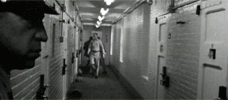
Titicut Follies
1967 -
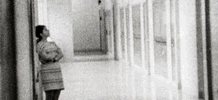
High School
1968 -

Law & Order
1969 -

Basic Training
1971 -

Juvenile Court
1972 -
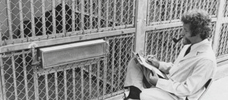
Primate
1974 -
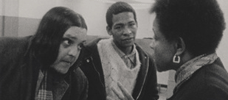
Welfare
1975 -
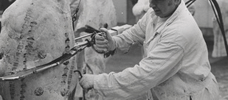
Meat
1976 -
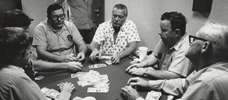
Sinai Field Mission
1978 -
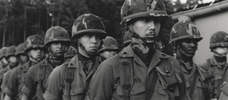
Manoeuvre
1979 -

Model
1980 -

The Store
1983 -

Blind
USA -

Adjustment & Work
1986 -

Missile
1987 -

Central Park
1989 -

Near Death
1989 -

Aspen
1991 -

Zoo
1993 -

High School II
1994 -

Ballet
1995 -
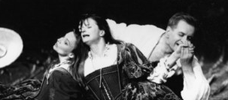
La Comédie-Française
1996 -

Public Housing
1997 -

Belfast, Maine
1999 -

Domestic Violence / Domestic Violence 2
2001 / 2002 -

The Last Letter
2002 -

State Legislature
2006
We don’t do comments anymore, but you may contact us here or find us on Twitter or Facebook.



